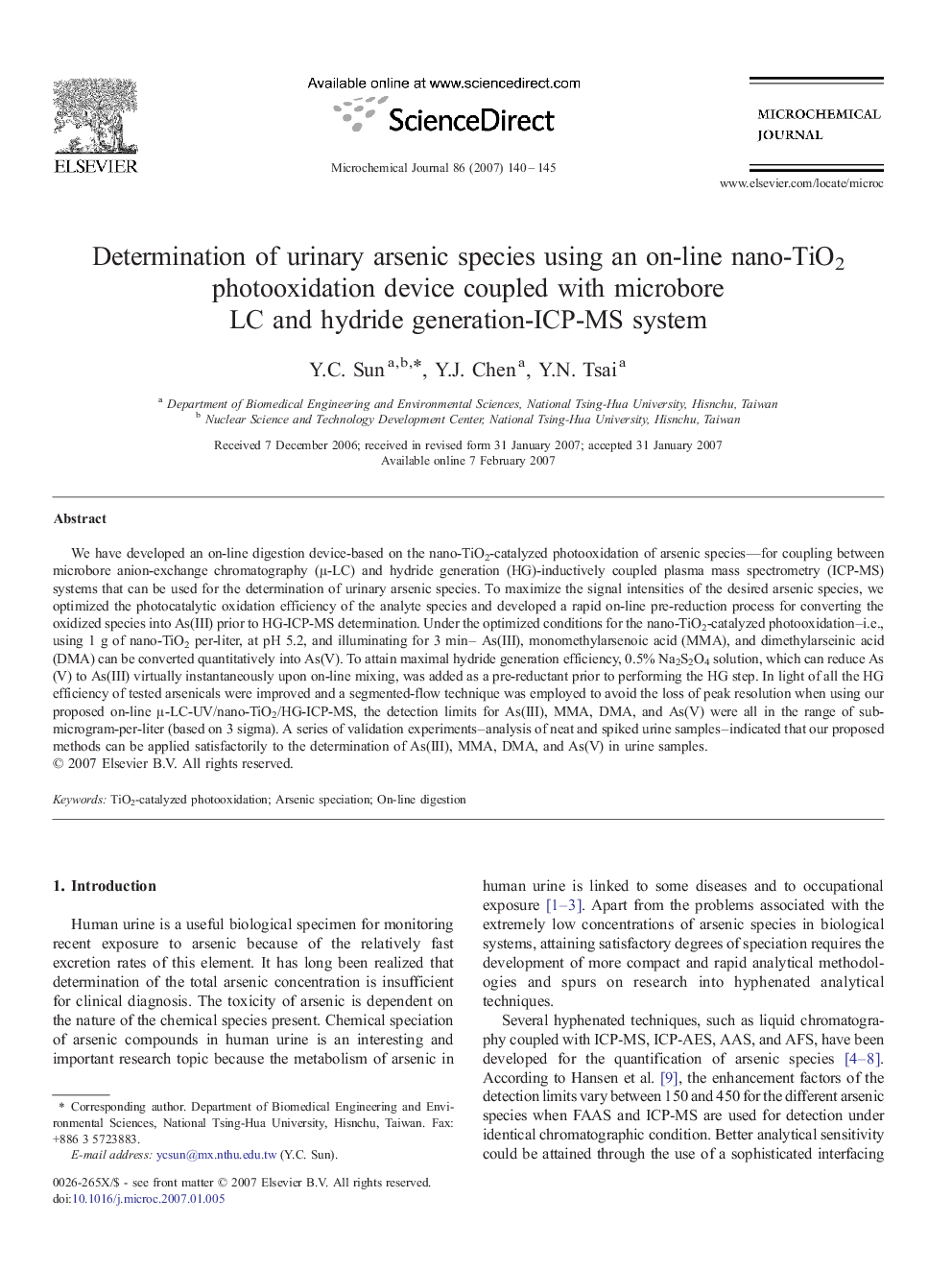| Article ID | Journal | Published Year | Pages | File Type |
|---|---|---|---|---|
| 1228399 | Microchemical Journal | 2007 | 6 Pages |
We have developed an on-line digestion device-based on the nano-TiO2-catalyzed photooxidation of arsenic species—for coupling between microbore anion-exchange chromatography (μ-LC) and hydride generation (HG)-inductively coupled plasma mass spectrometry (ICP-MS) systems that can be used for the determination of urinary arsenic species. To maximize the signal intensities of the desired arsenic species, we optimized the photocatalytic oxidation efficiency of the analyte species and developed a rapid on-line pre-reduction process for converting the oxidized species into As(III) prior to HG-ICP-MS determination. Under the optimized conditions for the nano-TiO2-catalyzed photooxidation–i.e., using 1 g of nano-TiO2 per-liter, at pH 5.2, and illuminating for 3 min– As(III), monomethylarsenoic acid (MMA), and dimethylarseinic acid (DMA) can be converted quantitatively into As(V). To attain maximal hydride generation efficiency, 0.5% Na2S2O4 solution, which can reduce As(V) to As(III) virtually instantaneously upon on-line mixing, was added as a pre-reductant prior to performing the HG step. In light of all the HG efficiency of tested arsenicals were improved and a segmented-flow technique was employed to avoid the loss of peak resolution when using our proposed on-line μ-LC-UV/nano-TiO2/HG-ICP-MS, the detection limits for As(III), MMA, DMA, and As(V) were all in the range of sub-microgram-per-liter (based on 3 sigma). A series of validation experiments–analysis of neat and spiked urine samples–indicated that our proposed methods can be applied satisfactorily to the determination of As(III), MMA, DMA, and As(V) in urine samples.
